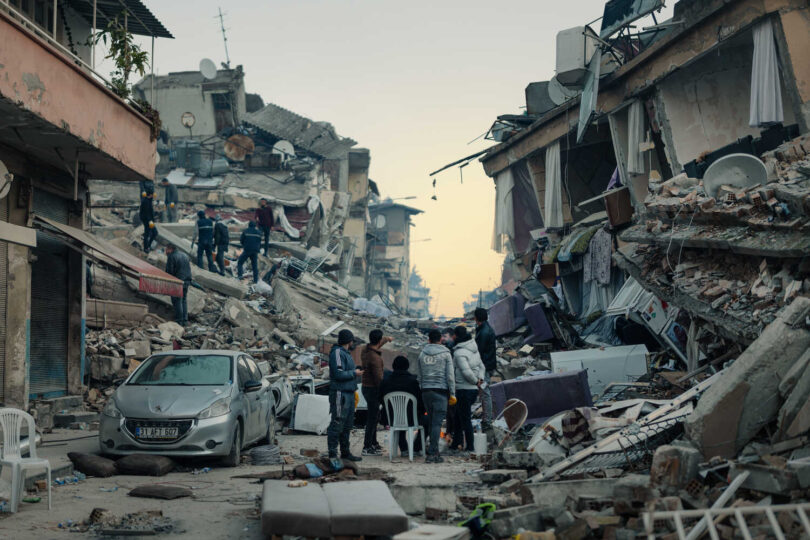Dr. Abdel Aziz Aluwaisheg
The earthquake in Turkiye and Syria last Monday has had catastrophic effects in both countries that have been compounded by the failure to end Syria’s civil war. Health and emergency services, already under severe strain before the disaster because of the influx of millions of Syrian refugees in Turkiye, almost collapsed near the epicenter. Similarly, the internally displaced in Syria have been among the most affected by the war and now the earthquake, but among the least likely to receive aid.
Six days after the earthquake, relief focus has switched from the search for survivors to retrieving bodies and caring for the living. The catastrophic toll is a grim reminder of the need to end the civil war so that refugees and IDPs can return home and recovery can begin. As we care for the victims, the UN needs to double its efforts to find a solution for this most devastating civil war, which will enter its 13th year next month.
It is estimated that the earthquake has claimed more than 24,000 lives. Many more are missing, injured or made homeless in bitterly frigid weather. Experts believe that this is the most powerful earthquake Turkiye has experienced in many decades, dwarfing the last major quake in Izmit, near Istanbul, in 1999.
The World Health Organization and others expect the casualty figures to climb dramatically once all the missing have been accounted for. In addition, as in other earthquakes, there will be many more victims later as disease spreads, and health and sanitation infrastructures take time to repair. These facts are especially true in rebel-held areas in northern Syria, where the central government does not account for the quake’s victims and health services are already at breaking point.
Turkiye has received aid from more than a hundred countries and relief organizations, according to Turkish officials. Syria by contrast has received much less, because its government has been ostracized by the international community. Those countries and aid agencies still willing to provide assistance have had to deal with Syrian government restrictions on aid delivery, especially to areas under rebel control, which have been the most affected in the country by the earthquake.
For years, those areas have been blockaded by government forces, supported by Russia and Iran. Aid delivery from outside Syria is hampered by the fact that the Syrian government has allowed outside access only through only one border crossing, Bab Al-Hawa, between Turkiye and Syria. It is kept temporarily open under a UN Security Council mandate, which has to be renewed every six months. UNSC Resolution 2672 adopted last month renewed it until July 2023.
Because of those conditions, aid has been slow to reach rebel areas. The first aid convoy made it through on Thursday, 72 hours after the earthquake, when six trucks crossed the precarious Bab Al-Hawa. Long lines of additional trucks awaited clearance from Syria to cross, prompting UN Secretary-General Antonio Guterres to call on the Syrian government to open more passageways for aid.
In the rest of northern Syria, where damage has been extensive, but less severe, serious problems have surfaced in emergency preparedness and crisis management. The inadequate response to this catastrophe has exposed the fragility of Syrian infrastructure after 12 years of war, which has cost the lives of hundreds of thousands of Syrians and left half the population homeless. UN mediation and that of several countries have failed to move the government to negotiate in good faith to end the conflict.
The number of people confirmed dead in the earthquakes in Syria has exceeded 3,000, while about 300,000 were forced to leave their homes, according to Syria’s official media, but the real numbers are likely to be much higher because the government does not account for victims in rebel-held areas. UN efforts to resolve the Syrian crisis have been flagging after it failed to bridge the gap between the government and the opposition.
The UNSC Resolution 2254 represents the international community’s consensus, including Russia, a close ally of the Syrian government. It remains the only viable solution to the conflict. There is widespread and firm global commitment to the implementation of all aspects of UNSC Resolution 2254, including a nationwide ceasefire, the release of any arbitrarily detained persons, free and fair elections, and the need to build conditions for the safe, dignified, and voluntary return of refugees and internally displaced persons, consistent with UN standards. UN Special Envoy Geir Pedersen became the UN’s latest special envoy in 2018, but Syria does not appear to be closer to a political solution than when he started more than four years ago. He has diligently tried to get the parties to agree to a reciprocal step-for-step process, but so far without success.
Notwithstanding the international consensus around UNSC Resolution 2254, a political solution remains elusive, despite the tremendous cost of the Syrian conflict. The main reason for the impasse is the refusal of the Syrian government to go along, supported by Iran and Russia. After the Ukraine war broke out, Russia redeployed some of its forces in Syria to the Ukraine front. While that was a welcome move in the context of Syria, it has increased its instability, as Russian forces were quickly replaced by Iran-affiliated sectarian militias and other unruly elements, increasing the potential for escalation.
Similarly, Iran’s preoccupation with internal strife may provide another opening, especially in light of its engagement with GCC countries aimed at de-escalation. The UN should take advantage of this shift in Russia and Iran’s focus, and intensify its efforts to find a durable solution. Now is not the time for a letup or a pause in the intensity of its efforts because of the earthquake and its aftermath. Just the opposite, because positive movement on the UN-mediated talks could help relief work, recovery and rebuilding of affected areas in Syria.







